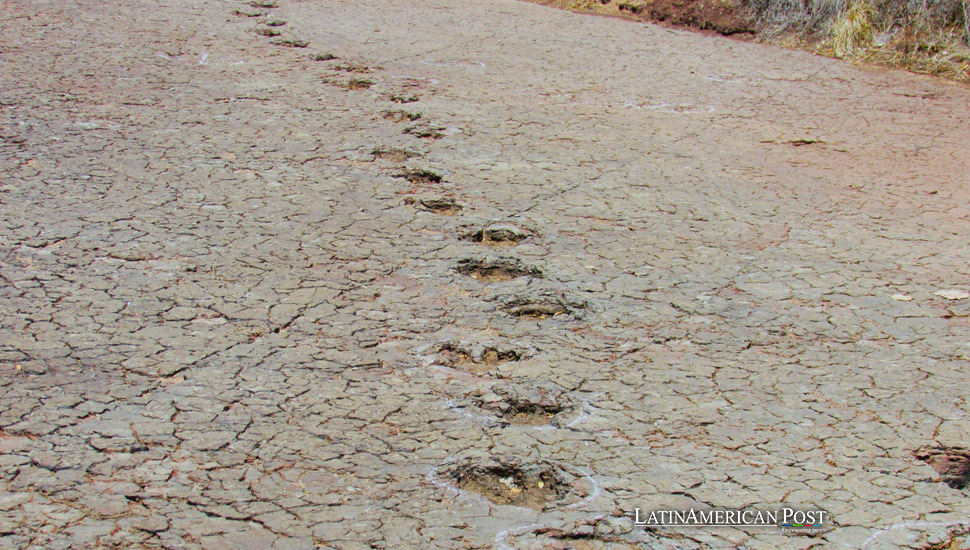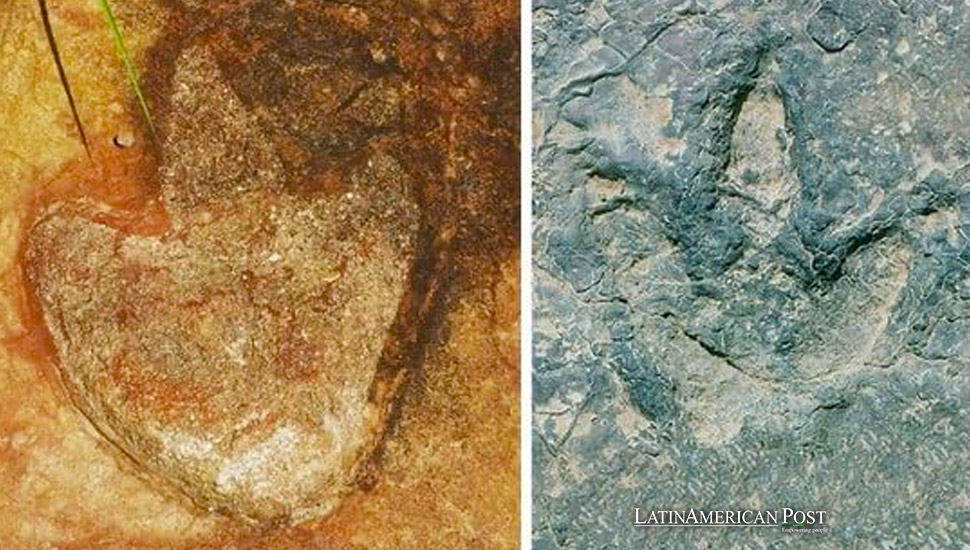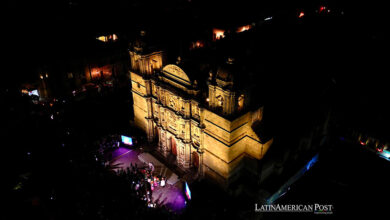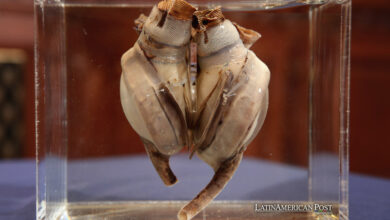Reveal Ancient Connection Between South America and Africa

A groundbreaking discovery of over 260 Early Cretaceous dinosaur footprints in Brazil and Cameroon offers compelling evidence of a once-connected supercontinent, Gondwana, where dinosaurs roamed freely between what are now separate continents millions of years before their dramatic split.
In a remarkable paleontological breakthrough, an international team led by Southern Methodist University (SMU) paleontologist Louis L. Jacobs has uncovered a series of Early Cretaceous dinosaur footprints stretching across two continents that are now separated by the vast expanse of the Atlantic Ocean. The discovery, comprising more than 260 footprints in Brazil and Cameroon, provides unprecedented insight into the ancient world when South America and Africa were still joined as part of the supercontinent Gondwana. This research sheds new light on the movements of dinosaurs and the geological history of our planet, illustrating a time when these mighty creatures could traverse what would eventually become two distinct landmasses.
Footprints Across Time and Space
The footprints, which date back to around 120 million years ago, were found more than 3,700 miles apart—in the Sousa Basin of Brazil and the Koum Basin of Cameroon. Despite the geographical distance, the tracks exhibit striking similarities in age, geological context, and shape, suggesting similar types of dinosaurs created them. “We determined that in terms of age, these footprints were similar,” explained Jacobs. “In their geological and plate tectonic contexts, they were also similar. In terms of their shapes, they are almost identical.”
The footprints were impressed into mud and silt along ancient rivers and lakes, environments that were common in both regions during the Early Cretaceous period. At that time, the continents were still connected, forming a contiguous landmass where dinosaurs and other life forms could move freely. The discovery of these matching footprints on separate continents is a rare and significant find, offering a tangible link to a time when the world was very different.
Gondwana: The Supercontinent
Gondwana was one of the two supercontinents that formed after the breakup of the even larger landmass known as Pangea. Around 180 million years ago, Pangea began to fragment, forming Gondwana in the Southern Hemisphere. Gondwana included what are now South America, Africa, Antarctica, Australia, and the Indian subcontinent. The discovery of these dinosaur footprints provides a snapshot of life on Gondwana during the Early Cretaceous, a period of significant geological and biological activity.
As the tectonic plates beneath Gondwana shifted, they caused rifts to open up in the Earth’s crust, eventually leading to the breakup of the supercontinent. Around 140 million years ago, South America and Africa began to pull apart, a process that continued for millions of years as magma from the Earth’s mantle rose to the surface, creating new oceanic crust and eventually filling the gap with the South Atlantic Ocean.
“One of the youngest and narrowest geological connections between Africa and South America was the elbow of northeastern Brazil nestled against what is now the coast of Cameroon along the Gulf of Guinea,” Jacobs explained. “The two continents were continuous along that narrow stretch so that animals on either side of that connection could move across it.”
Theropods and Their Travels
The majority of the dinosaur footprints found in Brazil and Cameroon were made by theropods, a group of bipedal, primarily carnivorous dinosaurs that included some of the most fearsome predators of the Mesozoic era, such as Tyrannosaurus rex. Their three-toed feet and hollow bones characterize theropods, features visible in the fossilized footprints. The discovery of these footprints in Brazil and Cameroon suggests that theropods were widespread across Gondwana and among the last dinosaurs to roam freely between South America and Africa before the continents split.
In addition to theropods, a few of the footprints found in the two regions were likely made by sauropods. These long-necked, herbivorous dinosaurs were among the largest animals ever to walk the Earth. Some may also have been made by ornithischians, a diverse group of herbivorous dinosaurs that included species like Triceratops. The variety of footprints found suggests that a range of dinosaur species inhabited the area, taking advantage of the rich ecosystems along the ancient rivers and lakes.
Geological Evidence of Continental Drift
The locations where the footprints were found—Brazil’s Borborema region and Cameroon’s Koum Basin—are geologically significant in their own right. Both areas contain half-graben basins, geologic structures that form when the Earth’s crust is pulled apart by tectonic forces, causing large blocks of land to sink relative to their surroundings. These basins often become sites of sedimentation, where rivers and lakes deposit layers of mud, silt, and other materials over millions of years. It is within these ancient sediments that the dinosaur footprints were preserved.
Alongside the footprints, researchers also found fossil pollen in the sediments, which helped to date the footprints to approximately 120 million years ago. The presence of these half-graben basins in Brazil and Cameroon, coupled with the matching footprints, provides strong evidence that these regions were once part of a single, continuous landmass before the breakup of Gondwana.

Implications for Paleontology and Geology
The discovery of these dinosaur footprints has significant implications for our understanding of paleontology and geology. For paleontologists, the footprints provide a rare and valuable glimpse into the behavior and distribution of dinosaurs during the Early Cretaceous. The fact that similar footprints were found on two separate continents suggests that the dinosaurs of Gondwana were more widely distributed than previously thought and that they may have been able to migrate across vast distances.
For geologists, the footprints offer further evidence of continental drift, the slow movement of Earth’s tectonic plates that has shaped the planet’s surface over millions of years. The matching footprints in Brazil and Cameroon are a testament to the power of tectonic forces to reshape the Earth’s continents, creating new oceans and separating once-connected landmasses.
A Tribute to Martin Lockley
The study documenting these findings was published in a unique New Mexico Museum of Natural History & Science issue dedicated to the late paleontologist Martin Lockley. Lockley was a pioneer in studying dinosaur tracks and footprints, and his work laid the foundation for much of the research that has followed. The discovery of these footprints in Brazil and Cameroon is a fitting tribute to Lockley’s legacy, as it builds on his lifelong fascination with the stories that dinosaur tracks can tell.
As Louis Jacobs and his team continue their research, they hope to uncover even more clues about the dinosaurs that once roamed Gondwana and the geological forces that shaped the world we know today. The matching footprints in Brazil and Cameroon are just one piece of a much larger puzzle. Still, they offer a tantalizing glimpse into a world that existed millions of years ago when dinosaurs ruled the Earth and the continents were still united as one.
Also read: Discovery of Ancient Dinosaur Fossil in Brazil Sparks Scientific Excitement
The discovery of matching dinosaur footprints in Brazil and Cameroon is a landmark in paleontology and geology. It provides new insights into the distribution and behavior of dinosaurs during the Early Cretaceous and underscores the profound impact of continental drift on the history of life on Earth. As scientists continue to explore these ancient footprints, they will uncover even more secrets about our planet’s distant past, offering a deeper understanding of the forces that have shaped our world today.




